
Biomicrofluidics
Scope & Guideline
Bridging disciplines to drive progress in colloid and surface chemistry.
Introduction
Aims and Scopes
- Microfluidic Device Development:
The journal emphasizes the design, fabrication, and optimization of microfluidic devices for various applications, including diagnostics, drug delivery, and biological studies. - Biological Applications:
Research published in the journal often explores the application of microfluidics in biological systems, including cell culture, organ-on-chip models, and biomolecule analysis. - Innovative Analytical Techniques:
Biomicrofluidics supports studies that develop and utilize novel analytical techniques, such as optical, electrochemical, and acoustic methods, to enhance sensitivity and specificity in biological assays. - High-Throughput Technologies:
The journal highlights advancements in high-throughput screening and analysis methods, enabling rapid testing of biological samples and improving efficiency in research and diagnostics. - Interdisciplinary Approaches:
Biomicrofluidics encourages interdisciplinary research that combines principles of engineering, biology, and materials science to create multifunctional microfluidic systems.
Trending and Emerging
- Organ-on-Chip Technologies:
There is a significant increase in research related to organ-on-chip models, which simulate human organ functions for drug testing and disease modeling, showcasing the potential for personalized medicine. - AI and Machine Learning Integration:
The incorporation of artificial intelligence and machine learning techniques into microfluidic systems is becoming prominent, enhancing data analysis and predictive modeling in biological studies. - Point-of-Care Diagnostics:
A growing trend towards developing microfluidic devices for point-of-care testing reflects the need for rapid and accessible diagnostic solutions, particularly in response to global health challenges. - Environmental Applications:
Microfluidics is increasingly being applied to environmental monitoring and analysis, addressing issues such as pathogen detection and pollutant analysis, highlighting its versatility beyond biomedical applications. - Advanced Materials for Microfluidics:
Research into novel materials, such as biocompatible polymers and nanomaterials, is on the rise, enabling enhanced functionality and performance in microfluidic devices.
Declining or Waning
- Traditional Microfluidic Techniques:
There has been a noticeable reduction in publications focused solely on traditional microfluidic techniques without integration of advanced technologies or interdisciplinary approaches. - Basic Fluid Dynamics Studies:
Research concentrating on fundamental fluid dynamics principles in isolation is declining, as there is a growing preference for studies that focus on practical applications and integrated systems. - Static Microfluidic Systems:
The interest in static or passive microfluidic systems is waning in favor of dynamic systems that offer better control and functionality for complex biological applications. - Single-Use Microfluidics:
While single-use devices were previously a significant focus, the trend is shifting towards reusable and more sustainable microfluidic systems that allow for integrated analytics and longer-term studies.
Similar Journals

BioChip Journal
Fostering Collaboration to Shape the Future of BioengineeringBioChip Journal, published by the Korean Biochip Society (KBCS), is a renowned academic platform dedicated to advancing the fields of bioengineering, biomedical engineering, biotechnology, and electrical and electronic engineering. With its ISSN 1976-0280 and E-ISSN 2092-7843, this esteemed journal has established itself as a valuable resource for researchers, professionals, and students alike, providing them with cutting-edge research and insights since its inception in 2008. The journal has earned a commendable standing in the academic community, achieving Q2 ranking across key categories, thereby placing it amongst the top-tier publications. With its impressive Scopus rankings, including a top 10% position in Electrical and Electronic Engineering and a strong showing in both Biomedical Engineering and Biotechnology, BioChip Journal plays a vital role in disseminating innovative biochip technologies and applications. The journal continues to invite groundbreaking studies and reviews that promote the interdisciplinary collaboration essential for the future of biochip research, ultimately contributing to advancements in healthcare, diagnostics, and therapeutics.
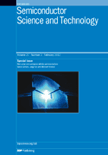
SEMICONDUCTOR SCIENCE AND TECHNOLOGY
Driving collaboration in semiconductor science and technology.Semiconductor Science and Technology is a pivotal journal in the fields of condensed matter physics, electrical and electronic engineering, and materials science, published by IOP Publishing Ltd. With an ISSN of 0268-1242 and an E-ISSN of 1361-6641, this esteemed journal has been disseminating groundbreaking research since 1986 and is set to continue through 2024. Recognized in the latest categorizations, it holds a notable Q2 ranking in Condensed Matter Physics, Electrical and Electronic Engineering, and Materials Chemistry, alongside a Q3 ranking in Electronic, Optical, and Magnetic Materials, highlighting its significant contribution to the advancement of these disciplines. Although it does not operate under an open access model, the journal provides critical access options for researchers and professionals seeking to foster innovation and collaboration within the semiconductor community. As a vital resource, Semiconductor Science and Technology not only supports the dissemination of high-quality research but also serves as a platform for emerging trends and developments that are shaping the future of semiconductor technology.
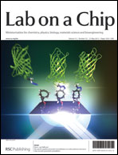
LAB ON A CHIP
Elevating Research Standards in Biochemical TechnologyLAB ON A CHIP, published by the Royal Society of Chemistry, is a prestigious journal that occupies a pivotal position within the realms of biochemistry, bioengineering, and biomedical engineering. With its ISSN 1473-0197 and E-ISSN 1473-0189, this UK-based journal has been at the forefront of microfluidics and lab-on-a-chip technology since its inception in 2001, consistently contributing to advancements in these dynamic fields. The journal enjoys an impressive reputation, boasting a Q1 ranking in several categories, including Biochemistry and Bioengineering, and maintaining a significant presence reflected through its Scopus rankings. The journal's commitment to innovation and cross-disciplinary research is evident as it bridges chemistry with nanoscale science and technology, making it an essential resource for researchers, professionals, and students seeking to stay abreast of groundbreaking developments. Although it follows a traditional subscription model, its high visibility and accessibility underscore the importance of sharing cutting-edge research findings globally. Recognized as a vital platform for fostering scientific discourse, LAB ON A CHIP continues to play a crucial role in shaping the future of laboratory technology and applications.
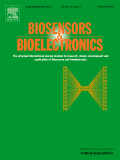
BIOSENSORS & BIOELECTRONICS
Connecting Researchers to the Pulse of Bioelectronic AdvancementsBIOSENSORS & BIOELECTRONICS, published by Elsevier Advanced Technology, is at the forefront of research and innovation in the realms of biomedical engineering, biophysics, and biotechnology. Established in 1990, this esteemed journal has established itself as a premier platform, receiving a prestigious Q1 ranking across multiple categories, including Electrochemistry and Nanoscience, reflecting its critical impact on advancing scientific knowledge and technology. With an impressive range of topics, including the latest trends in biosensor development and bioelectronic application, it serves as an invaluable resource for researchers, professionals, and students alike, facilitating collaborative dialogue and innovative solutions. Though primarily subscription-based, the journal is accessible from its UK headquarters in Oxford, promising rigorous peer-reviewed articles that inform future trends and applications in this dynamic field.
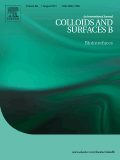
COLLOIDS AND SURFACES B-BIOINTERFACES
Unraveling Complexities of Colloids and SurfacesCOLLOIDS AND SURFACES B-BIOINTERFACES is a premier interdisciplinary journal published by Elsevier, dedicated to advancing the knowledge of interfaces and interactions in biological systems and their applications in biotechnology. With an impressive impact factor that underscores its significance in the field, the journal ranks in the Q1 category for Biotechnology, Medicine, and Physical and Theoretical Chemistry in the 2023 classifications. It has achieved notable positions in Scopus rankings, highlighted by a top-tier rank in Colloid and Surface Chemistry, demonstrating its influence on ongoing research. Spanning from 1993 to 2025, C&B B-BIOINTERFACES serves as a vital platform for innovative research contributions, fostering knowledge exchange among researchers, professionals, and students. The journal focuses on the intricate relationships between colloids, surfaces, and biological materials, paving the way for groundbreaking developments in drug delivery, biomaterials, and nanotechnology. While not an open-access publication, readers can anticipate insightful, high-quality articles that significantly impact the scientific community.

STRUCTURAL CHEMISTRY
Connecting Theoretical Insights with Experimental TechniquesSTRUCTURAL CHEMISTRY is a premier journal published by SPRINGER/PLENUM PUBLISHERS, dedicated to advancing the study and understanding of the structural aspects of chemistry. With an ISSN of 1040-0400 and an E-ISSN of 1572-9001, this journal serves as a critical resource for researchers and professionals engaged in the fields of Condensed Matter Physics and Physical and Theoretical Chemistry. Since its inception in 1990, it has become an essential platform for disseminating high-quality research, featuring articles that explore innovative methodologies, experimental techniques, and theoretical frameworks. As evidenced by its Scopus rankings, including #192 in Condensed Matter Physics and #101 in Physical and Theoretical Chemistry, the journal occupies a respected position within the academic community, promoting interdisciplinary collaboration and insight. While it operates on a traditional subscription model, the journal continues to broaden its reach to foster knowledge exchange among scholars worldwide. With a commitment to excellence and relevance, STRUCTURAL CHEMISTRY remains a vital contributor to the scientific dialogue surrounding chemical structure and its myriad implications across various scientific disciplines.
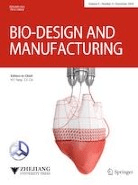
Bio-Design and Manufacturing
Empowering Innovation at the Intersection of Biology and ManufacturingBio-Design and Manufacturing, published by SPRINGER HEIDELBERG, is a pioneering journal that stands at the forefront of innovation in the fields of Biomedical Engineering, Biotechnology, Industrial and Manufacturing Engineering, and Materials Science. With its ISSN 2096-5524 and E-ISSN 2522-8552, this journal has established itself as a leading platform for disseminating cutting-edge research and advancements that merge biological principles with manufacturing processes, emphasizing sustainable and efficient practices. It has garnered recognition in the 2023 category quartiles, boasting a Q1 rank in all its relevant fields, which underscores its significance and impact—evident from its prime Scopus rankings that place it within the top percentiles of numerous engineering and materials science disciplines. Researchers, professionals, and students alike benefit from the wealth of knowledge presented in this journal, making it an essential resource for those seeking to enhance their understanding of bio-design applications and innovation in manufacturing processes.
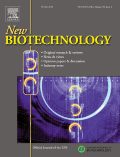
New Biotechnology
Shaping the Future of Biotechnology and MedicineNew Biotechnology, published by Elsevier, is a distinguished academic journal focused on the innovative realms of biotechnology and bioengineering. With an impact factor reflecting its strong presence in the field, this journal serves as a vital resource for researchers and professionals in the life sciences, offering insights into cutting-edge advancements and applications in biotechnology, molecular biology, and related disciplines. The journal's open access policy enhances its accessibility, allowing broad dissemination of knowledge and research findings. With a robust set of Scopus ranks placing it in the top tiers of its categories, including rank #36 in Biotechnology and #24 in Bioengineering, New Biotechnology represents a critical platform for scholars aiming to contribute to the ongoing dialogue in these rapidly evolving fields. Since its inception in 2008 and continuing through to 2024, the journal remains committed to fostering innovation and collaboration among scientists dedicated to advancing biotechnological applications, thereby significantly impacting medicine and industry.

Journal of Micro-Bio Robotics
Unveiling the Potential of Micro-Bio SystemsThe Journal of Micro-Bio Robotics, published by SPRINGER HEIDELBERG, is an esteemed periodical dedicated to the dynamic intersection of robotics and biological systems. With an ISSN of 2194-6418 and an E-ISSN of 2194-6426, this journal spans a broad spectrum of interdisciplinary research from 2013 to 2024, reflecting its commitment to advancing knowledge in fields such as biomedical engineering, biotechnology, electrical and electronic engineering, materials science, and mechanical engineering. This journal holds a Q4 ranking in Biomedical Engineering and a Q3 ranking in several other critical categories, demonstrating its growing influence within the scientific community. The journal serves as a vital resource for researchers, professionals, and students aiming to explore cutting-edge developments in micro-bio robotics, providing a platform for high-impact research that helps facilitate innovation and collaboration in this emerging field. While currently not offering Open Access options, the journal's rigorous peer-review process ensures the highest quality of published work, making it an essential tool for anyone looking to stay abreast of advancements in micro-bio robotic technology.
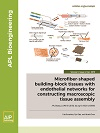
APL Bioengineering
Empowering Discoveries in Bioengineering and BeyondAPL Bioengineering is a premier open-access journal published by AIP Publishing, dedicated to advancing the field of bioengineering and its interdisciplinary applications. Established in 2017, this journal serves as a vital platform for researchers, professionals, and students interested in the critical intersections of bioengineering, biomaterials, biomedical engineering, and biophysics. With an impressive impact factor and consistent rankings in the Q1 category across multiple domains, including biochemistry and materials science, APL Bioengineering has positioned itself among the top journals in its field. The journal aims to publish innovative original research, comprehensive reviews, and insightful case studies that further the understanding and application of bioengineering principles. Since its inception, APL Bioengineering has fostered a community of thought leaders, providing open access to ensure broad dissemination of knowledge and advancements that underpin the future of biomedical innovation.